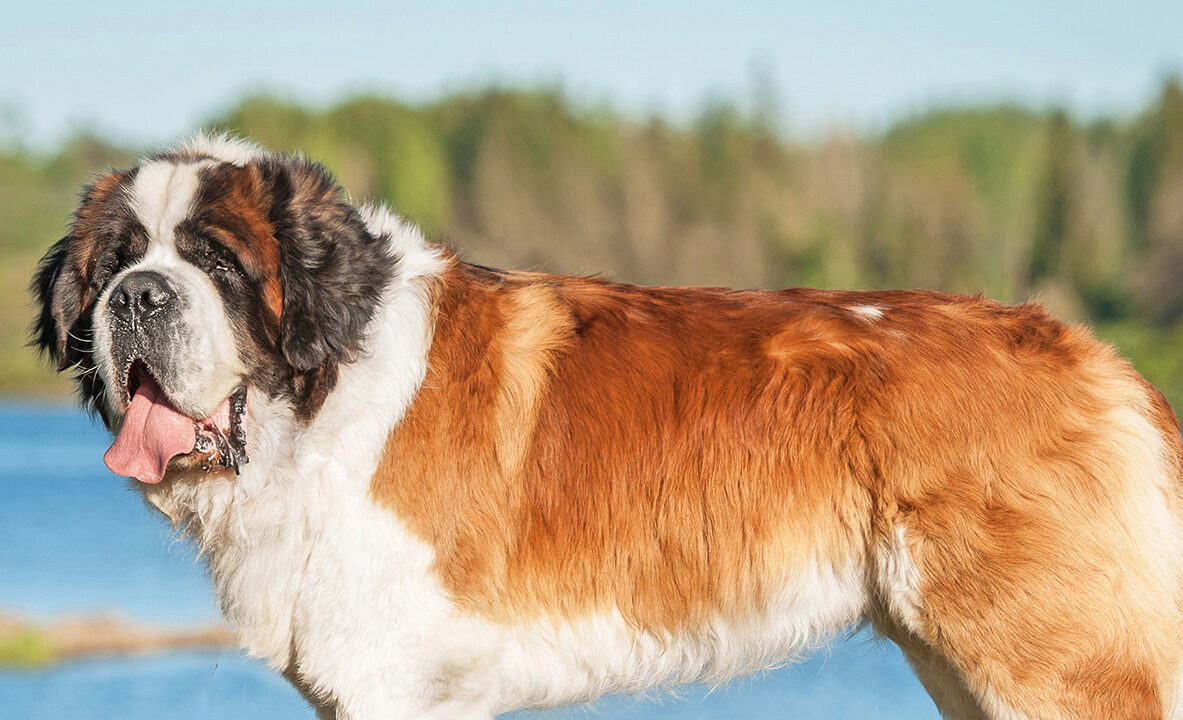
Bloat in Dogs
Posted: 02/14/2023 | Categories: Common problems in dogs
What is bloat?
Gastric dilatation and volvulus (GDV), more commonly known as bloat, is a life-threatening condition which can affect all dogs. However, larger breeds of dog are often more susceptible to developing the condition.
Bloat occurs when a dog’s stomach fills with fluid, gas or food, putting pressure on its diaphragm and causing breathing difficulties. This is known as gastric dilation. As the dog’s stomach expands, it can often twist, trapping the contents of the stomach inside and cutting off the organ’s main blood supply. The increased pressure can cause the stomach to rupture, and can even cause the dog’s spleen to twist. The swelling can also obstruct the blood flow back to the dog’s heart, causing low blood pressure and shock. This twisting of the stomach is known as volvulus or gastric torsion and it occurs in some, but not all, cases of bloat in dogs.
Bloat is extremely serious, and can cause your dog’s health to deteriorate very quickly. Prompt veterinary treatment is vital in terms of increasing your dog’s chances of survival if they develop the condition.
What causes bloat in dogs?
There are many possible causes of bloat, however experts have discovered that the condition is normally triggered by your dog’s eating habits or by stress:
- Eating habits such as rapid eating and drinking, exercising too soon after mealtimes or eating foods which produce abnormal amounts of gas can also cause bloating in your dog’s stomach.
- Dogs who tend to be nervous or anxious will often swallow air. This is known as aerophagia and it is seen in lots of animals, even humans. Stressful situations, such as dog shows, a change in routine, kenneling or an introduction of a new dog to the household, can also trigger this behavior.
However, there are certain characteristics which may mean your dog is predisposed to bloat. Older, male dogs, particularly those with deeper, more narrow chests, are more at risk, and the condition is often hereditary.
While bloat can affect dogs of any age or breed, it is more common in the following dog breeds:
- Great Dane
- Saint Bernard
- Boxer
- German Shepherd
- Doberman
- Weimaraner
- Irish Setter
- Gordon Setter
- Newfoundland
What are the symptoms of bloat?
The most common sign of bloat is a swollen stomach. Your dog may also seem restless, have shallow breathing, or be retching and drooling.
If your dog looks pale, has a weakened pulse and rapid heart rate, they may have gone into shock, and it’s therefore imperative that you take your dog straight to your veterinarian.
What is the treatment for bloat?
The treatment your dog receives will depend upon how severe the bloat is. Your veterinarian will normally perform an x-ray to assess the seriousness of the condition and to see whether or not the stomach is twisted.
Your veterinarian may then pass a tube down your dog’s throat and into the stomach to release some of the gas that has built up. However, if the stomach is twisted, the tube may be unable to pass through the opening of the stomach and your veterinarian will instead insert a large, hollow needle into your dog’s belly to release the pressure. Once the build-up of gas has been released, your dog should be able to breathe normally and the blood flow to their organs will return to normal.
When your dog is in a more stable condition, your veterinarian will normally perform surgery on the stomach to return it to a normal position. If there is damage to the spleen or stomach tissue, this may need to be removed. They will also stitch your dog’s stomach to the abdominal wall to prevent it twisting again. This preventative procedure is known as a gastropexy.
Your dog will need plenty of rest and some pain-relieving medication while they recover from surgery, but they should be back to their normal self and can eat and exercise normally after several weeks.
Can bloat be prevented?
While bloat in dogs cannot be prevented entirely, there are several ways you can help minimize the likelihood of it occurring:
- Avoid feeding your dog dry kibble and ensure water is available at all times
- Feed your dog two or three smaller meals rather than one large meal a day
- Avoid feeding your dog from an elevated food bowl, and instead, feed them at floor level
- Wait at least two hours after meal times before exercising your dog
- If you have more than one dog, try and feed them individually and in a quiet location to reduce stress around meal times
- And, if you are making changes to your dog’s diet, always introduce the new food gradually over a period of three to five days
If your dog has an increased risk of developing bloat due to their breed, your veterinarian may recommend preventative surgery. However, they will be able to offer you advice around the best option for you and your dog.